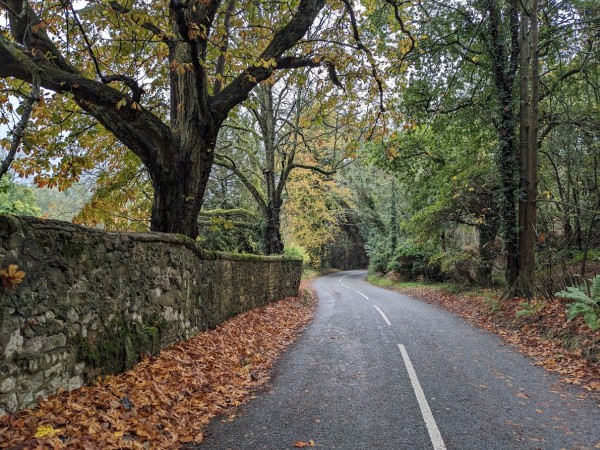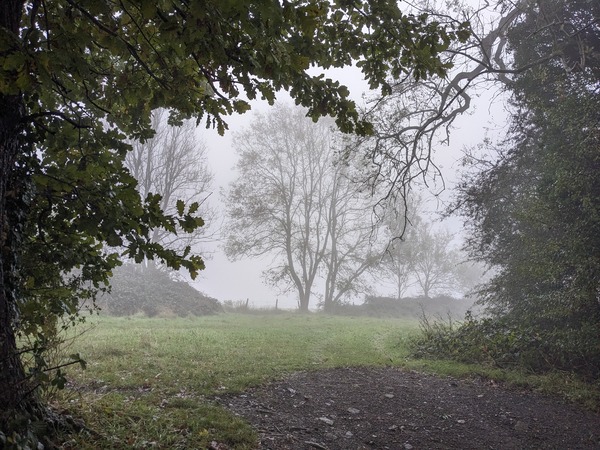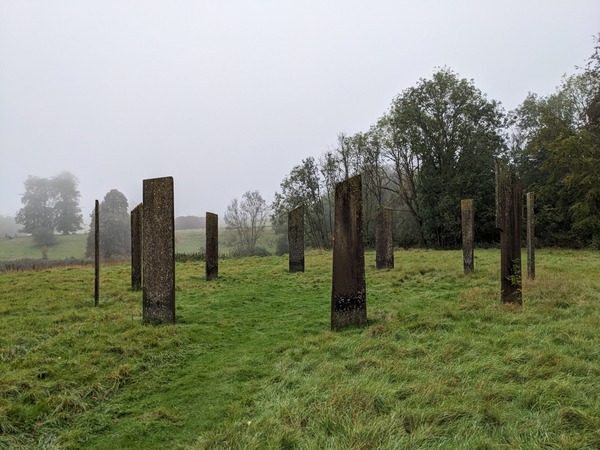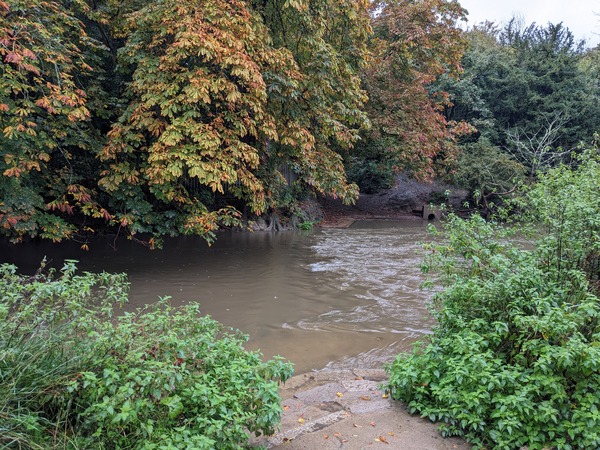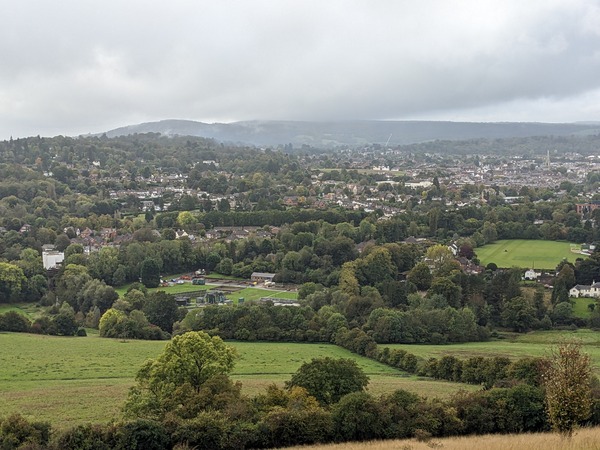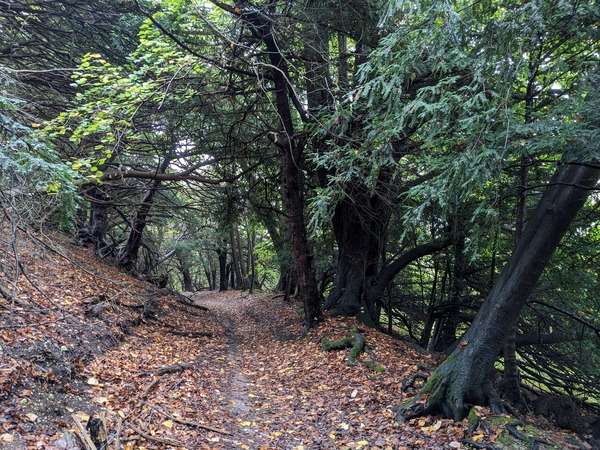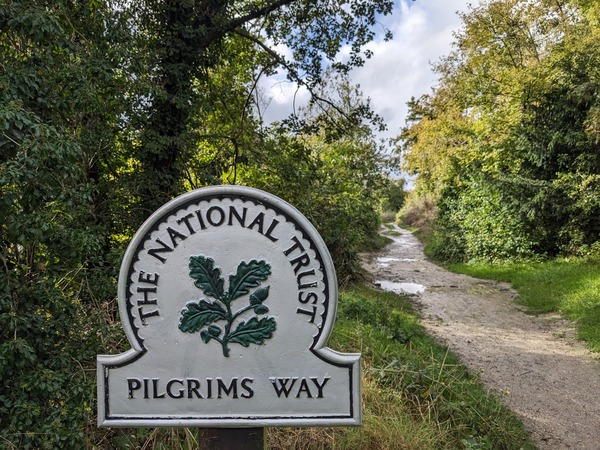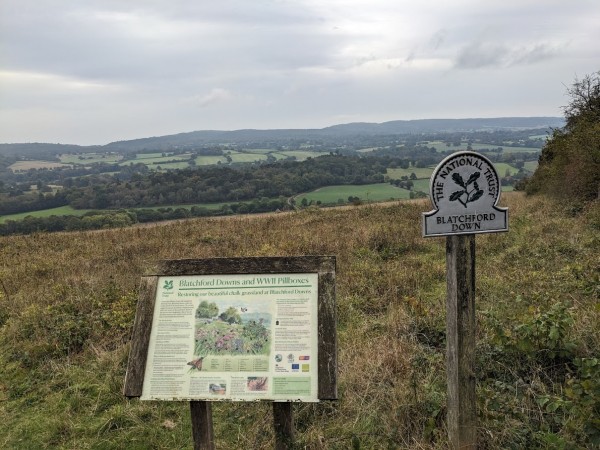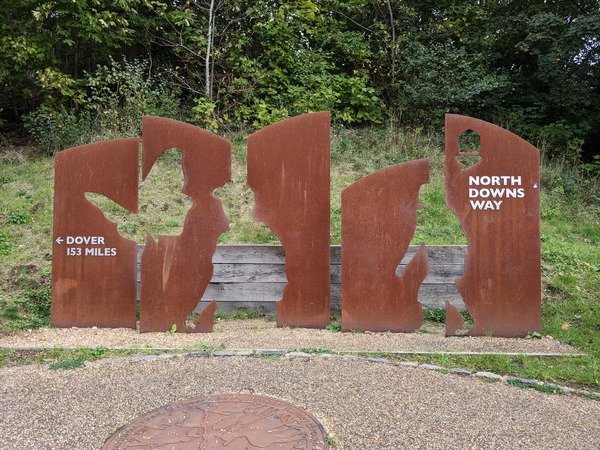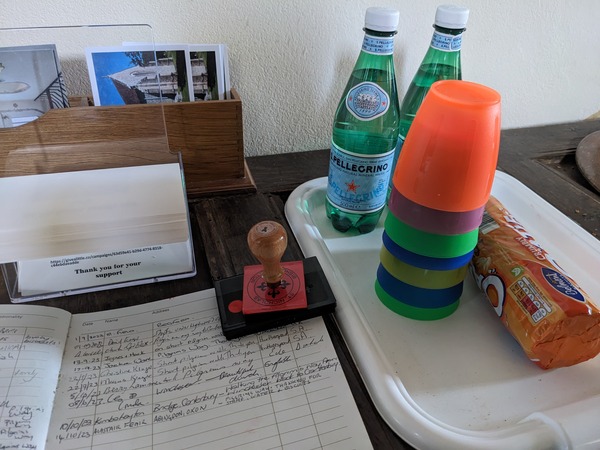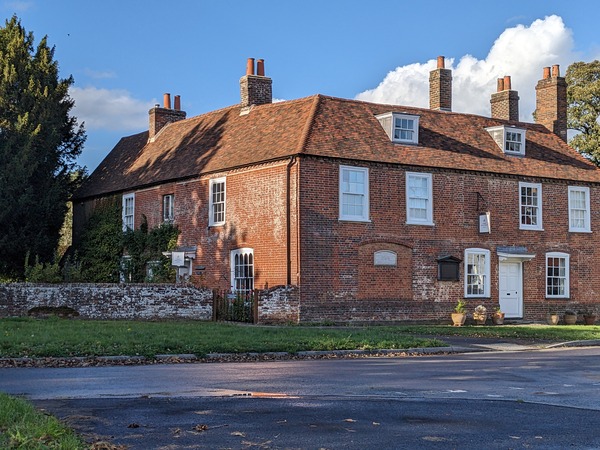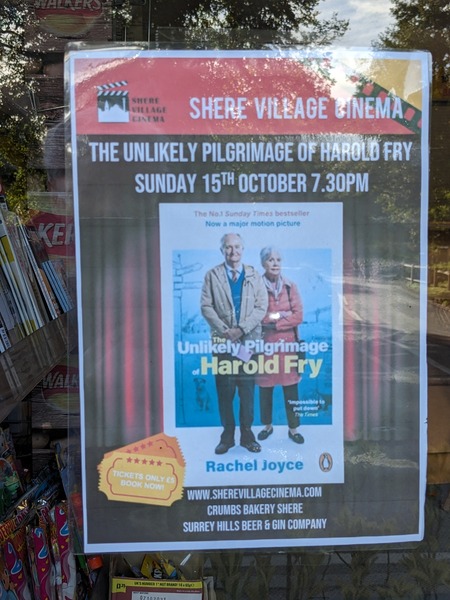
The bed and breakfast was ideally placed for walking along the Downs. So, I decided to do that rather than trying to go back to Farnham. I started early and said goodbye to J, who gave me general directions on how to get back onto the Pilgrims’ Way.
Getting onto the Downs was very easy. It was just at the end of the road. I had to keep cutting across until I came to a wide track like a racecourse. I think that was the main North Downs Way. But what I soon learned was that, unlike the St Swithun’s Way, which is the same as the Pilgrims’ Way, the North Downs Way is quite different and there are no markers for the Pilgrims Way. So I had to follow the walking guide more precisely.
My first target was the Church of Saint Martha on the Hill. It’s covered by trees and wasn’t visible, so I asked a couple of young ladies for directions. They said they were going that way, so I followed them. Because of my leg, they got ahead of me quite quickly. I followed in the same general direction, asking again and again just to make sure I was on the right way.
I saw a lot of young people coming out from a campsite with big packs on their backs. I saw them again at the St. Martha’s Church. They were being sent out on what looked like different orienteering assignments by their teacher.
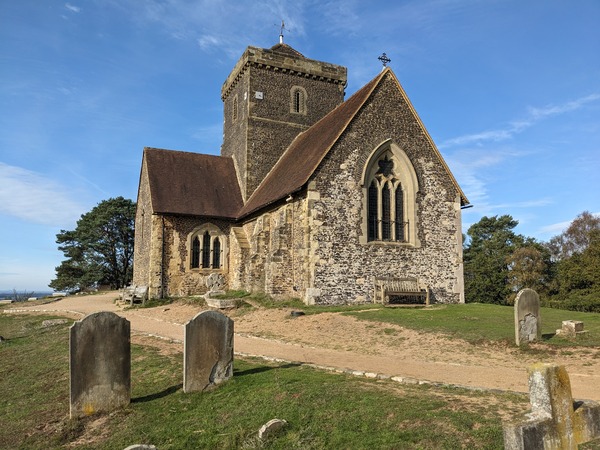
The doors to St. Martha’s were closed, so there was no way of getting a stamp. I asked two ladies sitting on a bench if they would mind signing my card, and they were very happy to do that. I’m not sure if the pilgrim verification process will worry about that. I’ve got a squiggle instead of a stamp.
From there, I headed along sandy paths on a lovely sunny morning. It started off being the same as the North Downs Walk, and then diverged.
At one point, I met a man sitting on a tree trunk. He had dark glasses and a really stout walking stave. He said that as a result of diabetes, he had lost some eyesight and balance. So he needed the glasses and the stave. He was very interested in the Pilgrims’ Way because he was a real fan of Pilgrim’s Progress.
He was a committed Christian, and he had lots of Bible verses to quote at me. We had an interesting discussion about our individual faith journeys. Two other men came along, and for a while, we talked about steam trains, but when they were gone, he got back onto Jesus again before parting.
He told the story of the men going to Emmaus and seeing Jesus on the way and how they hadn’t realised it was Jesus at first. My thought was, had I been talking to Jesus there with his dark glasses and large stave and the spaniel dog?
After that, there were various little turns. I came across a church that looked really splendid. I think it was called Aubrey Park Church, but there was no way into it. They had a big private sign. I think it’s more part of the housing estate than a church now.
I followed the path to the village of Shere. It seemed very quiet at first, as I walked over a ford and along by the river, and then by a top-heavy building called Old Prison House, but then a bit further on, there were benches by the river and people crammed on each bench and lots of people walking around to the shops. Quite a contrast to the rest of the Pilgrim’s Way. I had found Vanity Fair. It was a tourist honey trap, and I found out later the reason was that it had been the scene for various films including Four Weddings and a Funeral.

I went to the church in search of a pilgrim stamp. A lady in a red robe said, “Are you looking for the pilgrim things? They’re over this side.” There was quite a big display of scallop shells, including one large Rafia scallop shell. I couldn’t talk to her too long, but she’d been on the Pilgrim’s Way herself and had stayed in church floors on the way. That was a good way of doing it if you’re going on a budget. I think being part of the C of E herself probably helped.
Then a group of school children came, and she had to give them some sort of lesson about churches. In one little alcove, behind some glass, there was a Madonna and child from around 1300 that could have been from a pilgrim staff. It was found by a girl around 1886, given to the church in 1956, and was stolen in 1971. Thankfully, the police recovered it in 1973 from some sort of thief’s hoard, and since then, it has been kept under much tighter security.
After leaving Shere, the path I was following took many twists and turns, and I made a wrong turn, ending up on a rabbit warren path rather than the intended route. Upon retracing my steps, I eventually reached Abinger Hammer.

I heard the clock strike three o’clock, but I wasn’t there to witness the animatronic man striking the bell. I headed to the Abinger Tea Room to get my card signed and enjoyed a delicious carrot cake and pot of tea. I had a lovely chat with the lady there, who has been working there for 40 years. She still has her old Kent Road accent, reflecting her origins. I was the only customer, unlike in Shere. I noticed an advertisement in the window for the film ‘The Unlikely Pilgrimage of Harold Fry,’ which was shown at the Shere Village Cinema on October 15th.
I then ventured down to the farm, where they still cultivate watercress, but not in the quantities they did back in the 1970s when I used to visit. They now primarily sell it to local restaurants. I strolled around the green, and while looking across the stream, I spotted a kingfisher. It was the closest I’ve ever been to one. It was perched on an alder, but before I could even consider taking a picture, it flew away.
I then headed to catch the bus, which was scheduled for 4:17 but arrived considerably later. I had been waiting since 4 o’clock, but I didn’t mind as I was enjoying the view and the sunshine. When the clock struck 4, I thought I’d capture a video, but while fiddling with the phone camera, I missed seeing it with my eyes for a second time.
The traffic in Guildford was horrendous. The narrow valley causes traffic to funnel, leading to congestion in an Abingdon like way, probably worse. There was a mix-up with my rebooking with G at last night’s accommodation, but she found me an alternative place to stay. So here I am, in another part of town with V, who was kind enough to let me stay. She helps G out when there are foreign students need placing.
The leg held out well with my slow walking, support bandage, and walking stick. I think its probably arthritis now but can’t be sure.
